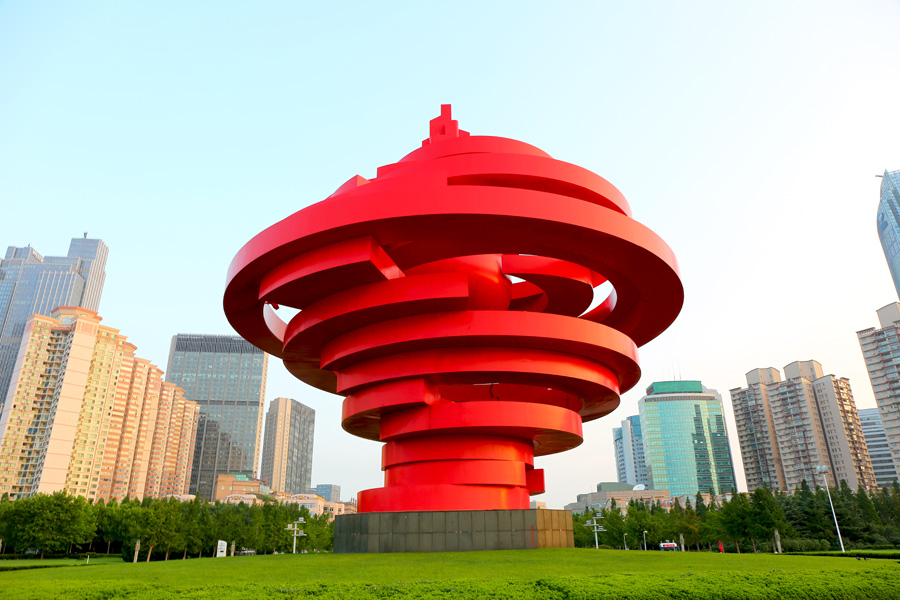[fshow photosetid=72157662449201709]
Most people are familiar with Leonardo da Vinci, Picasso and Monet. School children are taught about these artists’ influence on art, science and society all over the world and millions flock to view their works in museums in Florence, Paris and London. Harder is it when it comes to Qi Baishi, Qui Ying or Hokusai. Luckily, museums in Asia offer plenty of opportunity to get familiar with Asia’s great artists, classic and contemporary. Below are a few suggestions of places to start.
National Museum of Modern and Contemporary Art, Seoul
With branches in Gwacheon, Deoksugung, Seoul and, in 2019, in Cheongju, the National Museum of Modern and Contemporary Art (MMCA) is South Korea’s largest contemporary art museum. It was founded in 1969 to contribute to the development of contemporary Korean art by systematically conserving and exhibiting art works created since 1910. The main museum is located in Gwacheon just south of the capital where a superb natural landscape make the perfect backdrop for the museum’s various genres including architecture, design and crafts.
However, MMCA is not just a staid place for passive viewing; the museums regularly arranges workshops and aims to be a cultural platform that encourages communication and cross cultural engagement, using both art and science. The collection includes contemporary art from Korea and beyond, including important national and international artists while also giving space to relatively overlooked genres like print, craft, photography and new media.
MoCA, Taipei
The Museum of Contemporary Art Taipei (MoCA Taipei) is Taiwan’s first museum to focus solely on contemporary art. The museum building was built during Japanese rule in 1921 as a school and after the handover from Japan to the Republic of China it housed the Taipei City Government. To this day, the building is still a landmark thanks to its beautiful symmetrical architecture and unique bell tower.
MoCA Taipei shares the popular vision that societies around the world are increasingly transformed by globalisation, digitisation and advanced technology and the museum reflects that in its collections and philosophy. It is a joint effort between the Taipei City Government, the local community, artists and the business world and a platform for cross-disciplinary forms of exhibition such as contemporary media, photography, video installations, architecture and graphic design.
National Art Museum of China, Beijing
One of the largest museums in China, the National Art Museum of China (NAMOC) covers more than 30,000 square metres in land area and owns more than 100,000 works of art in 17 exhibition halls laid out over five floors. Its permanent collection includes priceless ancient and imperial as well as contemporary works of art, most of it Chinese with a few western collections in between.
Collections at NAMOC can be divided into two main genres, fine art and folk art, which are again divided into various sub-categories including traditional Chinese paintings, oil painting, print, sculpture, caricature, watercolour painting, lacquer, porcelain and costumes to name but a few. Highlights include works by Ren Bonian, Wu Changshuo, Huang Binhong and Qi Baishi amongst others.
From time to time, NAMOC puts together large exhibitions which attract international attention. In the past these have included “Walking from Yan’an-Art Exhibition to Commemorate the 70th Anniversary of the Publishing of Comrade Mao Zedong’s Talks at the Yan’an Forum on Art and Literature” and “Century Development? Inspiring Painting -Arts Painting Exhibition for Centennial Anniversary of the Revolution of 1911”.
National Museum of Modern Art, Tokyo
There is no shortage of art museums in Tokyo, one more edgy and experimental than the next, but the mammoth of them all is the National Museum of Modern Art Tokey (MOMAT). Established in Kyobashi in 1952, the museums moved to its present location in Kitanomaru Koen in Chiyoda Ward in 1969. In 1970 followed the National Film Center and in 1977 the Crafts Gallery, completing the museum’s present organisation.
Exhibits date from the beginning of the 20th century to the present, featuring Japanese artists and international ones in disciplines including paintings, prints, water colours, drawings and sculptures to photographs and videos. The MOMAT Collection, the museum’s permanent collection, features 200 selected works while special thematic exhibitions are arranged four to five times per year, giving visitors an opportunity to explore various artists and themes.
National Gallery, Singapore
The newest member of Southeast Asia’s dynamic art scene is the National Gallery in Singapore, a much anticipated visual arts institution, housed in two of Singapore’s most iconic buildings: the former Supreme Court and City Hall. It houses the largest public collection of modern art in Singapore and Southeast Asia, including 8,000 works from the 19th and 20th centuries in all media, such as painting, sculpture, printmaking, photography and video. Aiming to become a cultural hub in Singapore and beyond, the National Gallery of Singapore also houses a range of art-inspired venues including fine dining and retail spaces.
Links:
- National Museum of Modern and Contemporary Art, Seoul – http://www.mmca.go.kr/eng/
- MoCA, Taipei – http://www.mocataipei.org.tw/
- National Art Museum of China, Beijing – http://www.namoc.org/en/
- National Museum of Modern Art Tokyo – http://www.momat.go.jp/
- National Gallery, Singapore – https://www.nationalgallery.sg/

